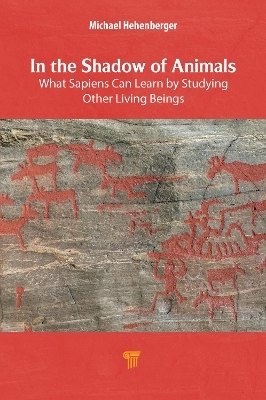
In the Shadow of Animals
Jenny Stanford Publishing (Verlag)
978-981-5129-62-5 (ISBN)
- Titel nicht im Sortiment
- Artikel merken
What differentiates humans from other living beings is our ability to communicate, our complex reasoning, and our use of skilled hands and smart brains to build houses, cities, and societies. We are able to learn. We penetrate into the unknown. We dominate our planet. For thousands of years, we have lived close to animals. As we are gaining a more complete understanding of our physiology, we are observing that we are not so different from them and other life forms. By studying them, we can sharpen our senses, treat diseases, and overcome some of our weaknesses. By observing their unique capabilities, we invent ways to emulate their performances in areas where evolution has helped them excel. Animals have helped us build our human culture and civilization. We still take advantage of them, even push them back into ever more restricted habitats. We are now at risk of forgetting that Sapiens’ only way to thrive, and planet Earth to survive, will be to humbly accept our place in the “shadow of animals.”
This book explains how various animals have adapted to extreme conditions, and why humans need to study animals and should protect them. It helps us to understand how “life on our planet” evolved. It is a popular presentation of the human–animal relationship for curious readers of all ages. It will hopefully stimulate scientific discussions among high school and university students.
Michael Hehenberger holds advanced degrees in physics and quantum chemistry. He spent his professional life in academia (Vienna, Austria; Uppsala, Sweden; and Gainesville, Florida) and industry (Sandvik, IBM). Throughout he focused on computational problems in engineering, computational chemistry and biology, AI, and nanomedicine. His first book Nanomedicine: Science, Business, and Impact covers both the underlying science and the steps needed to take biomedical breakthroughs from concept to patient benefit. His current research interests include “Big Data Analytics and AI,” “Quantum Information and Computing,” and “High Mountain Adaptations in Humans and Animals.”
Introduction Homo sapiens: Strengths and Weaknesses PROs and CONs of LIVING WITH AMIMALS COVID-19 What Humans can learn by studying Animals A. Human Knowledge derived from Genomic Model Organisms B. Human Knowledge derived from Biomedical Model Organisms Fruit Fly (Drosophila melanogaster) Mouse (Mus musculus) California Sea Slug (Aplysia californica) The Zebrafish (Danio Rerio) Human Health Benefits The Domestic Pig (Sus Domesticus) The Elephant (Loxodonta africana and Elephas maximus) Naked Mole Rat (Heterocephalus glaber) The Jellyfish (Scyphozoa, etc.) The Cone Snail (Conus magus, etc.) The Komodo Dragon (Varanus komodoensis) The Gila Monster (Heloderma suspectum) The Salamander (Urodela) The Burmese Python (Python bivittatus) Human Performance benefits The Atlantic Bay Scallop (Argopecten irradians / Pectinidae) The Owl (Strigiformes) The Pit Vipers (Crotalinae) The Vampire Bat (Desmodus rotundus) Electric Eel (Electrophorus electricus) and Ghost Knifefish (Apteronotidae) The Dolphin (Cetacea / Delphinidae, etc.) The Octopus (Cephalopoda) Hummingbirds (Trochilidae) The Peregrine Falcon (Falco peregrinus) The Bar-headed goose (Anser indicus) The Wild Yak (Bos mutus) and Domestic Yak (Bos grunniens) The Penguins (Sphenisciformes) The Polar Bear (Ursus maritimus) The Cheetah (Acinonyx jubatus) The Dog (Canis lupus familiaris) The Platypus (Ornithorhynchus anatinus) Conclusions Appendix A: Evolution of Life on Earth What is Life? How did life evolve on planet Earth? Adaptation Sexual Adaptations Appendix B: Genetic Engineering DNA and -OMICS CRISPR Appendix C: Metric versus US Customary Units
| Erscheinungsdatum | 09.01.2025 |
|---|---|
| Zusatzinfo | 3 Tables, black and white; 62 Illustrations, color; 50 Illustrations, black and white |
| Sprache | englisch |
| Maße | 152 x 229 mm |
| Themenwelt | Studium ► 1. Studienabschnitt (Vorklinik) ► Physiologie |
| Naturwissenschaften ► Biologie ► Zoologie | |
| Sozialwissenschaften ► Pädagogik ► Allgemeines / Lexika | |
| Sozialwissenschaften ► Pädagogik ► Bildungstheorie | |
| ISBN-10 | 981-5129-62-7 / 9815129627 |
| ISBN-13 | 978-981-5129-62-5 / 9789815129625 |
| Zustand | Neuware |
| Informationen gemäß Produktsicherheitsverordnung (GPSR) | |
| Haben Sie eine Frage zum Produkt? |
aus dem Bereich


